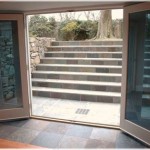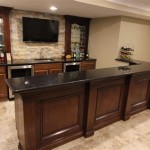How Much To Frame and Drywall a Basement
Finishing a basement can significantly increase the living space in your home, providing additional bedrooms, recreation rooms, or even home offices. Framing and drywalling are crucial steps in transforming a raw basement into a finished space. While the cost of framing and drywalling can vary based on several factors, understanding the key elements and potential costs will help you budget effectively for your project.
Factors Influencing Cost
The cost of framing and drywalling a basement is not a fixed rate. Multiple variables can influence the final price tag. These factors include:
- Basement Size: The square footage of the basement floor dictates the amount of materials needed. Larger basements require more framing lumber, drywall, and labor, leading to higher costs.
- Complexity of Design: Simple rectangular spaces are less expensive to frame than complex layouts with alcoves, curved walls, or multiple levels. The introduction of intricate designs increases the time and effort required, resulting in higher costs.
- Framing Materials: The type of wood used for framing affects the cost. Pressure-treated lumber is more expensive than standard framing lumber but provides greater resistance to moisture and decay. Consider the specific needs of your basement when selecting framing materials.
- Drywall Type: Drywall comes in various thicknesses and types, each with its own price point. Standard drywall is cost-effective, while moisture-resistant drywall is suitable for basements prone to moisture. The specific type of drywall selected will influence the overall cost.
- Labor Costs: The cost of labor varies depending on location, the experience of the contractor, and the project's complexity. Consult with multiple contractors to compare rates and ensure competitive pricing.
- Permits and Inspections: Local building codes may require permits and inspections for basement finishing. These costs can vary depending on your location and the project's scope.
Breakdown of Costs
For a typical basement finishing project, the costs can be broken down into the following categories:
Framing
- Framing Lumber: This includes studs, joists, and headers. The cost of framing lumber can fluctuate based on market conditions and the type of wood chosen.
- Framing Hardware: This includes brackets, joist hangers, and other fasteners. The cost of framing hardware is relatively minor compared to the cost of lumber but should be factored into your budget.
- Labor: The cost of labor for framing will depend on the complexity of the project, the size of the basement, and the contractor's rates.
Drywall
- Drywall Panels: The cost of drywall panels depends on the type, thickness, and size. Moisture-resistant drywall is typically more expensive than standard drywall.
- Drywall Accessories: This includes drywall screws, tape, joint compound, and other supplies. The cost of drywall accessories can vary depending on the quality and quantity required.
- Labor: The cost of labor for drywall installation will depend on the size of the basement, the complexity of the design, and the contractor's rates.
Other Costs
- Electrical Work: Adding electrical outlets, lighting fixtures, and wiring for appliances can significantly impact the project's overall cost.
- Plumbing: Installing new plumbing fixtures, drains, or water lines will also affect the budget.
- Insulation: Insulating the basement walls and ceiling can improve energy efficiency and comfort. The cost of insulation will vary depending on the type and thickness used.
- Finishing Touches: The cost of finishing touches, including painting, flooring, and trim, can also add to the project's overall budget.
Estimating Costs for Your Project
To get a rough estimate of the cost to frame and drywall your basement, consider the following:
- Square Footage: Calculate the total square footage of your basement. This will help you estimate the amount of materials needed.
- Complexity: Consider the design of your basement, including the number of walls, the presence of any alcoves or curves, and the number of levels.
- Materials: Research the cost of framing lumber, drywall panels, and other materials in your area. Factor in the cost of any specialized materials, such as moisture-resistant drywall or pressure-treated lumber.
- Labor Costs: Obtain quotes from multiple contractors to compare rates. Be sure to ask about the scope of work included in their estimates.
Remember, these estimated costs are just a starting point. The actual cost of your project may vary depending on the specific details and unforeseen circumstances that can arise during construction. Always consult with a qualified contractor for a more accurate project budget tailored to your specific needs and requirements.

How Much Does It Cost To Frame A Basement In 2024

How Much Does It Cost To Frame A Basement 2024

Basement Framing How To Frame Your Unfinished

Tips For Framing Basement Walls Semigloss Design

Insulating And Framing A Basement

Tips For Framing Basement Walls Semigloss Design

How To Frame A Basement Wall Step By Et Painters

Framing Basement Walls Against Concrete A Step By Guide Validhouse

How Much Does It Cost To Frame A Basement In 2024

Tips For Framing Basement Walls Semigloss Design







